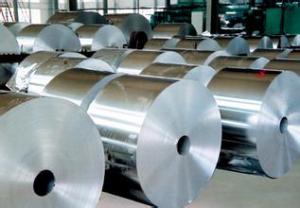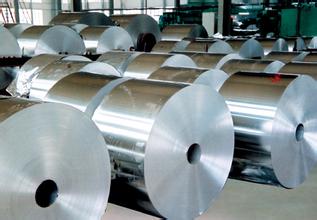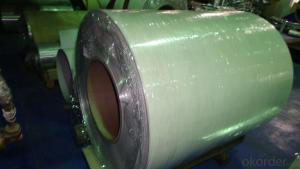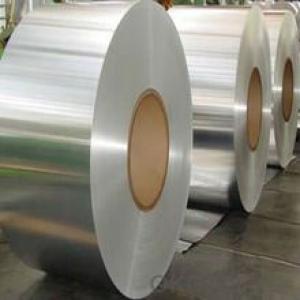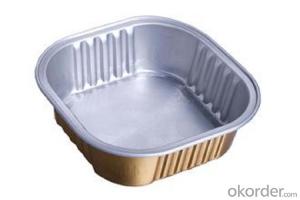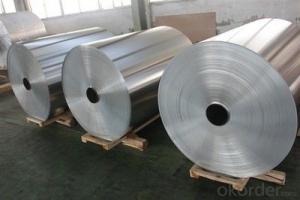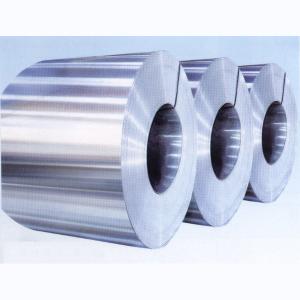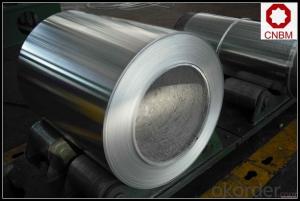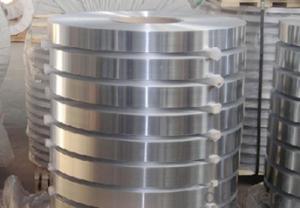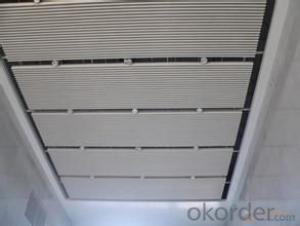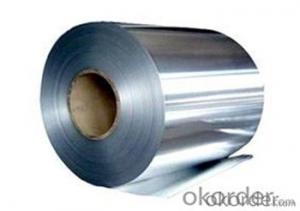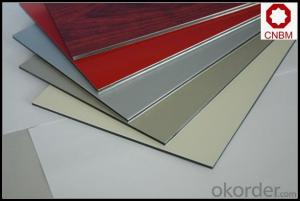AC Outdoor Unit Aluminum Coil Price - Aluminum Coil
- Loading Port:
- China Main Port
- Payment Terms:
- TT OR LC
- Min Order Qty:
- -
- Supply Capability:
- -
OKorder Service Pledge
Quality Product, Order Online Tracking, Timely Delivery
OKorder Financial Service
Credit Rating, Credit Services, Credit Purchasing
You Might Also Like
ALLOY: AA1***
AA3***
AA5***
TEMPER: H14 H16 H18 H22 H24 H26 H32 O/F
THICKNESS:0.03MM-3.0MM
WIDTH: 30MM-1700MM
COATING: PE(POLYESTER),PVDF,EPOXY
STANDARD: GB/T 17748-1999
- Q: Why there is arc panel after aluminum coil straightening?
- The aluminum coil can only become flat and straight after being planished on stretch bender.
- Q: Are aluminum coils suitable for medical equipment applications?
- Yes, aluminum coils can be suitable for medical equipment applications. Aluminum is lightweight, corrosion-resistant, and has excellent thermal conductivity properties. These factors make it an ideal material for various medical equipment applications, such as cooling systems, heat exchangers, and MRI coils. Additionally, aluminum coils can be easily formed and fabricated into complex shapes, allowing for customization based on the specific requirements of the medical equipment. However, it is important to note that the suitability of aluminum coils for medical equipment applications may also depend on other factors such as the specific medical device, regulatory requirements, and industry standards.
- Q: What is the maximum width-to-thickness ratio for aluminum coils?
- The maximum width-to-thickness ratio for aluminum coils is influenced by various factors, including the specific alloy, temper, and intended application. Industries like construction, automotive, and packaging commonly employ aluminum coils, which may necessitate different width-to-thickness ratios. Typically, the width-to-thickness ratio for aluminum coils ranges from 100:1 to 200:1. However, it is crucial to recognize that this range can fluctuate depending on the specific alloy and temper. Thicker coils generally possess a lower width-to-thickness ratio, while thinner coils may have a higher ratio. High-strength alloys, particularly those utilized in aerospace applications, typically exhibit lower width-to-thickness ratios due to their heightened strength requirements. Conversely, coils used in less demanding applications might have higher width-to-thickness ratios. To determine the appropriate width-to-thickness ratio for a specific aluminum coil, it is essential to consult relevant industry standards, specifications, or manufacturer guidelines. These guidelines take into account the intended use, mechanical properties, and performance requirements, ensuring that the coil is suitable for its intended application while maintaining structural integrity and functionality.
- Q: Are there any specific regulations or standards for aluminum coil production?
- Yes, there are specific regulations and standards for aluminum coil production. These regulations and standards are put in place to ensure the quality, safety, and sustainability of the production process. One of the most important standards for aluminum coil production is the American Society for Testing and Materials (ASTM) International standard. ASTM B209 is the standard specification for aluminum and aluminum-alloy sheet and plate, which includes the requirements for aluminum coil production. This standard specifies the chemical composition, mechanical properties, and other technical requirements that the aluminum coil must meet. In addition to ASTM standards, there are also regulations and standards set by regulatory bodies such as the International Organization for Standardization (ISO) and the Occupational Safety and Health Administration (OSHA). ISO 9001 is a widely recognized standard for quality management systems, and ISO 14001 is for environmental management systems. These standards provide guidelines and requirements for the production process to ensure quality, environmental responsibility, and worker safety. Furthermore, specific regulations may vary by country or region. For example, in the United States, the Environmental Protection Agency (EPA) regulates the emissions and waste disposal associated with aluminum coil production through the Clean Air Act and the Resource Conservation and Recovery Act (RCRA). These regulations aim to minimize the environmental impact of the production process. Overall, the regulations and standards for aluminum coil production are in place to uphold the quality, safety, and environmental sustainability of the industry. Compliance with these regulations and standards is essential for manufacturers to ensure that their products meet the required specifications and are produced in a responsible manner.
- Q: What is the common color of aluminum coil membrane?
- The blue transparent membrane is the most common.
- Q: What are the electrical conductivity properties of aluminum coils?
- Aluminum coils exhibit excellent electrical conductivity properties. Aluminum is a highly conductive metal, ranking second only to copper in terms of electrical conductivity. The conductivity of aluminum is approximately 61% of copper's conductivity. This makes aluminum coils a popular choice for electrical applications where high conductivity is required. The electrical conductivity of aluminum is attributed to its atomic structure. Aluminum atoms have a relatively high number of free electrons, which are responsible for the flow of electric current. These free electrons can easily move through the lattice structure of aluminum, resulting in efficient electrical conduction. Furthermore, aluminum possesses low resistance, allowing for minimal energy loss during the transmission of electricity. This makes aluminum coils a cost-effective option for electrical wiring, power transmission lines, and other applications that require efficient electrical conductivity. It is worth noting that aluminum's electrical conductivity decreases slightly with increasing temperature. However, this decrease is relatively small compared to other metals, making aluminum coils a reliable choice for applications that involve high temperatures. In summary, aluminum coils possess excellent electrical conductivity properties, making them suitable for a wide range of electrical applications. Their high conductivity, low resistance, and cost-effectiveness contribute to their widespread use in various industries.
- Q: Are aluminum coils suitable for heat exchanger applications?
- Indeed, heat exchanger applications are well-served by aluminum coils. Being a lightweight and highly conductive material, aluminum proves to be an exceptional selection for heat transfer applications. In heat exchangers, aluminum coils present numerous benefits, including exceptional thermal conductivity, resistance to corrosion, and ease of fabrication. These coils find widespread use in a variety of heat exchanger systems, encompassing air conditioning, refrigeration, and automotive applications. Furthermore, aluminum coils lend themselves easily to the formation of diverse shapes and sizes, thereby allowing for greater design flexibility. In summary, when it comes to heat exchanger applications, aluminum coils offer a dependable and efficient solution.
- Q: Roll presented above 1 complete circles are brineling put on work roll after the new rolling, less than 12 volumes in the aluminum surface will be presented in the corresponding position of a straight roller, a roller indentation in the above, check the work roll above a pit. Replace the upper support roll for only a few days. Want to know what's going on?Should not be bearing problems, because the bearings have been used for almost 4 years, it should not be bearing problems, and now they are suspected of bending cylinder seal problems, oil seepage phenomenon.
- Substandard products how to leave the factory, if not for external reasons, that is, when the design and installation of bearings, specifically, you find manufacturers to come to repair
- Q: What are the density and specific gravity values of aluminum coils?
- Aluminum coils have a density of around 2.7 grams per cubic centimeter (g/cm³) or 2700 kilograms per cubic meter (kg/m³). The specific gravity of aluminum coils is roughly 2.7.
- Q: How are aluminum coils protected against corrosion during storage?
- Aluminum coils are protected against corrosion during storage through various methods such as applying a protective coating, using desiccants or moisture-absorbing materials, ensuring proper ventilation, and storing them in a dry and controlled environment to prevent exposure to moisture and other corrosive elements.
Send your message to us
AC Outdoor Unit Aluminum Coil Price - Aluminum Coil
- Loading Port:
- China Main Port
- Payment Terms:
- TT OR LC
- Min Order Qty:
- -
- Supply Capability:
- -
OKorder Service Pledge
Quality Product, Order Online Tracking, Timely Delivery
OKorder Financial Service
Credit Rating, Credit Services, Credit Purchasing
Similar products
Hot products
Hot Searches
Related keywords
